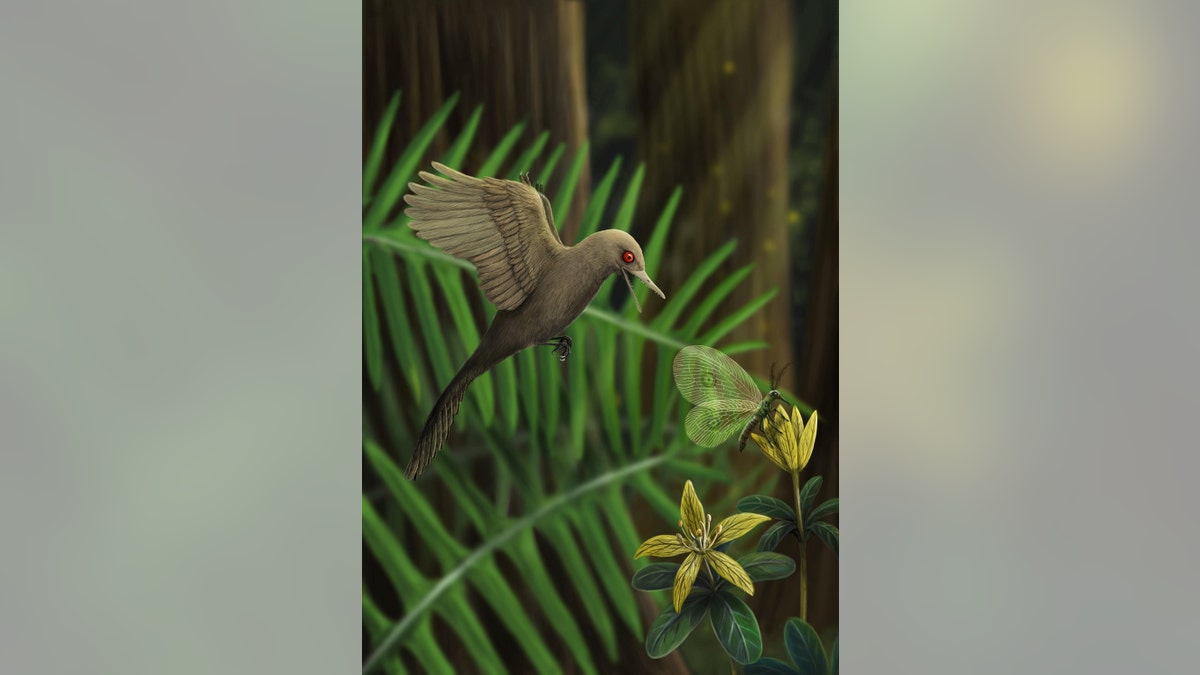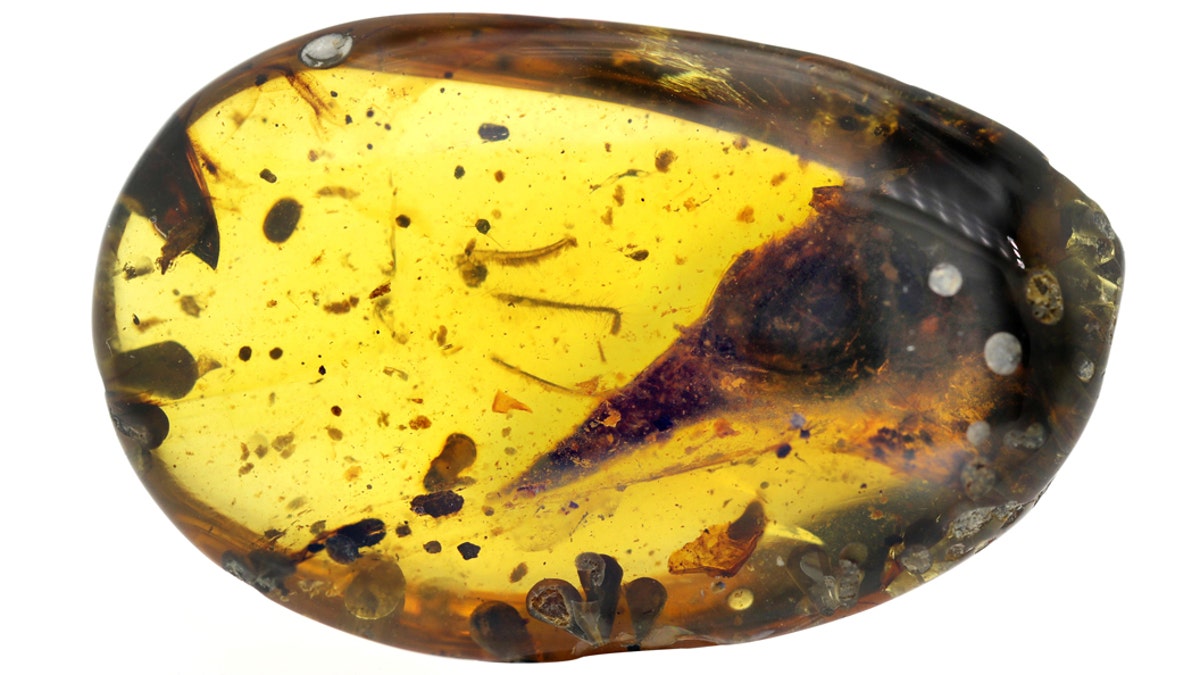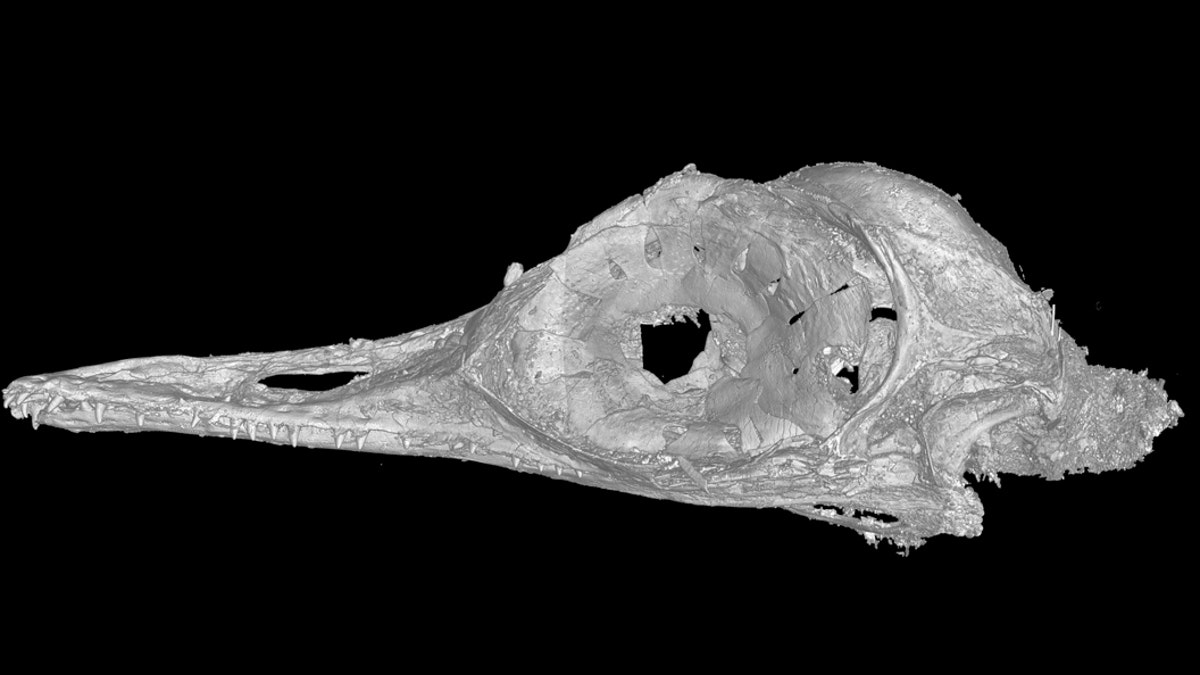Fox News Flash top headlines for March 11
Fox News Flash top headlines are here. Check out what's clicking on Foxnews.com.
The world's smallest dinosaur has been found, a two-inch bird-like creature that "looks like it just died yesterday."
Known as Oculudentavis khaungraae, the bird-like dinosaur was found encased in Burmese amber in 2016 and likely lived in Myanmar 100 million years ago, according to a study published in Nature. The creature died when a small amount of tree resin fell on its head, eventually entombing its skull.
"Amber preservation of vertebrates is rare, and this provides us a window into the world of dinosaurs at the lowest end of the body-size spectrum," the study's lead author, Lars Schmitz, said in a statement. "Its unique anatomical features point to one of the smallest and most ancient birds ever found."

An artistic rendering of Oculudentavis imagining what it looked like preying on an insect (Credit: HAN Zhixin.)
TRACES OF DNA FOUND IN FOSSILIZED DINOSAUR SKULL, SCIENTISTS CLAIM
O. khaungraae likely weighed less than an ounce and is believed to be on par with the smallest bird alive today, the bee hummingbird, which resides only in Cuba. Despite its tiny size, it's believed that the diminutive dinosaur was likely a predator, feeding on insects.
It also had wings, a pair of bulging eyes, similar to a lizard, and a beak with approximately 30 teeth, all of which can be viewed thanks to a computer-generated 3-D image. It's unclear if the dinosaur was able to fly, one of the study's co-authors, professor Jingma O'Connor, told Newsweek, noting its "weird" and "incomplete" features.

A seemingly mature skull specimen preserved in Burmese amber reveals a new species, Oculudentavis khaungraae, that could represent the smallest known Mesozoic dinosaur in the fossil record. (Credit: Xing Lida)
"I was completely blown away. You can see this beautiful, tiny bird skull preserved within this piece of amber," O'Connor, of the Chinese Academy of Sciences, said in a separate interview with British news agency SWNS. "I was going around showing it to everyone, like 'look at this, it's so cool!'"
"To a paleontologist, it's weird. We've never seen anything like it," O'Connor added. "I definitely couldn't keep a lid on this one!"
NEW 'REAPER OF DEATH' TYRANNOSAUR SPECIES DISCOVERED IN CANADA
The discovery of the dinosaur, previously missing from fossil records, will give researchers a new understanding of how birds evolved, including how they shrunk in size during the evolutionary process.

A CT scan of the skull of Oculudentavis by LI Gang, Oculudentavis means eye-tooth-bird, so named for its distinctive features. (Credit: Lars Schmitz)
"No other group of living birds features species with similarly small crania in adults," Schmitz explained. "This discovery shows us that we have only a small glimpse of what tiny vertebrates looked like in the age of the dinosaurs."
In November, the world's oldest carnivorous dinosaur was discovered, an apex predator known as Gnathovorax cabreirai. It was nearly 10-feet long and discovered in southern Brazil, where it lived nearly 230 million years ago.
Dinosaurs were wiped out 65 million years ago by an asteroid that hit Earth in what is now the Yucatan Peninsula in Mexico. It not only wiped out the dinosaurs but it also killed nearly 75 percent of all species on the planet. It may have also acidified Earth's oceans after its impact, according to a study published in October 2019.
Another study published in September 2019 compared the impact of the asteroid to the power of 10 billion atomic bombs.

